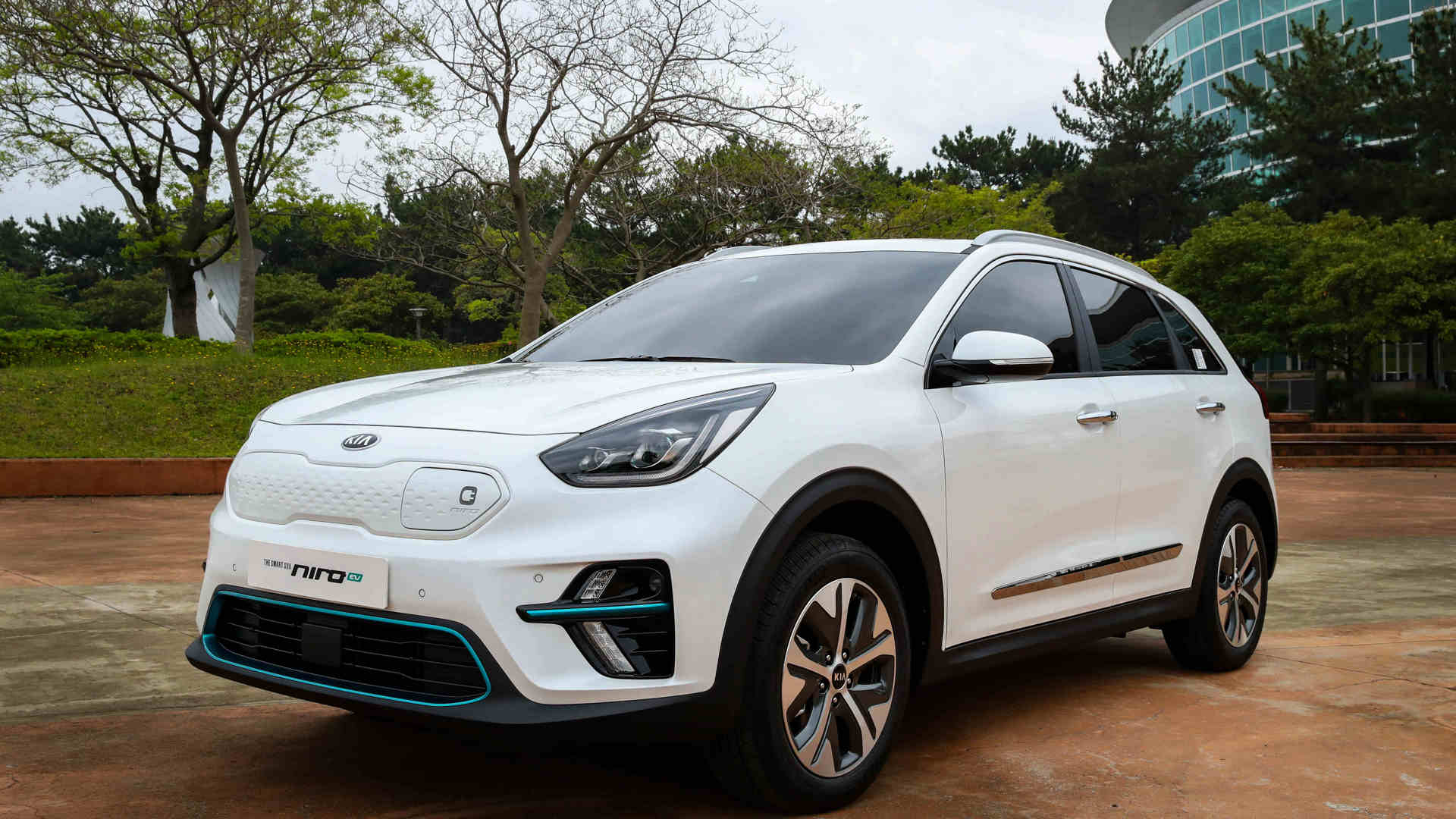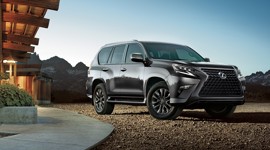We kicked off this feature in fine form for April with nine new and redesigned vehicles that included a trio of BMWs, the rebirth of the Chevrolet Blazer, and a very stylish Volvo station wagon.
The month of May brings a smaller batch of five new arrivals to Canadian showrooms. They include a long-awaited Jeep, Kia’s latest electric vehicle and a posh addition to VW’s sedan lineup.
2020 Jeep Gladiator
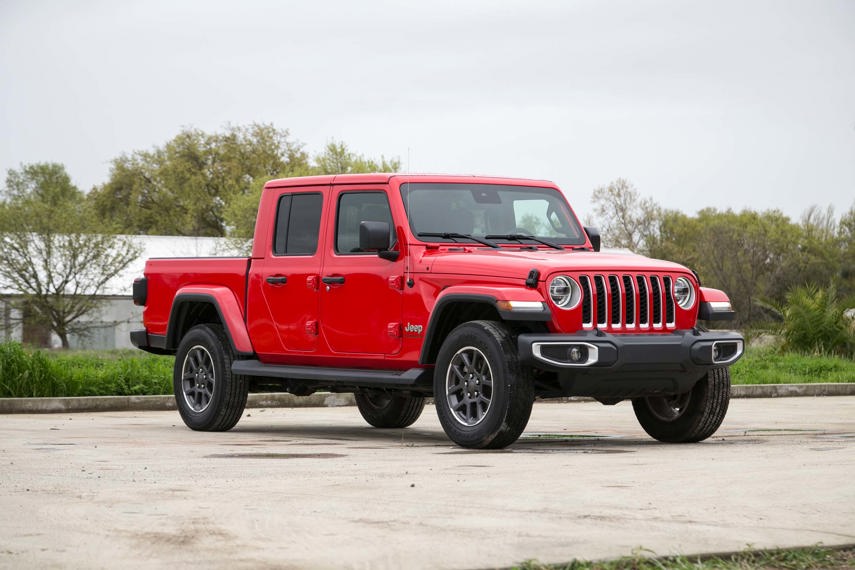
Jeep makes a dramatic return to the pickup segment with the Gladiator, a truck based on the latest-generation Wrangler SUV.
With the Gladiator, Jeep hopes to capitalize on the current craze for mid-size trucks like the Chevrolet Colorado/GMC Canyon twins, Toyota’s Tacoma, and the fresh-faced Ford Ranger.
That shouldn’t be difficult. Between the Wrangler’s status as a design icon and the popularity of pickups in general, we think Jeep will easily sell every Gladiator it can make.
To create the Gladiator, Jeep started with the four-door body of the Wrangler Unlimited and replaced the enclosed cargo area aft of the rear seats with a five-foot box. Jeep’s engineers also strengthened the Wrangler’s frame and fitted a rear suspension from the Ram 1500 pickup to lend the Gladiator a tow rating of 3,470 kg. The axles are also more robust than those in the Wrangler.
When the Gladiator arrives in Jeep showrooms next month, it’ll have FCA’s 3.6L V6 under its hood, making 285 hp and 260 lb-ft of torque. If you want the 3.0L diesel V6 (260 hp/442 lb-ft) Jeep has promised, you’ll have to wait until next year.
The standard transmission is a six-speed manual; an eight-speed automatic is the option.
Gladiator trims include Sport S ($45,495), Overland ($49,495), and Rubicon ($52,495).
2019 Kia Niro EV
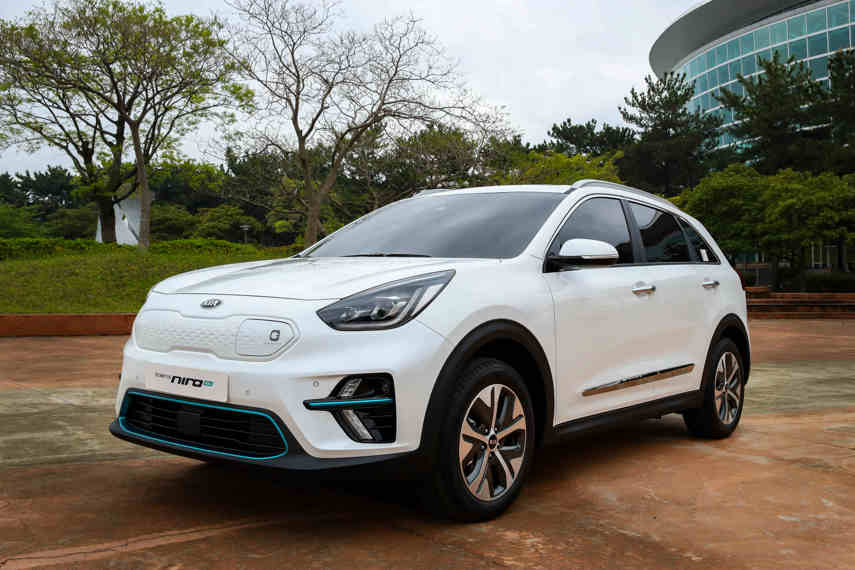
The 2019 Kia Niro EV is the third distinct variant of this compact wagon model. Kia introduced the Niro in 2017 as a gas-electric hybrid and added a plug-in hybrid (PHEV) for the 2019 model year.
Not only does the Niro EV run exclusively on electricity, but it’s also the most powerful version of the car, with 201 hp and 291 lb-ft of torque, bonuses of 62 hp and 96 lb-ft.
For Niro EV’s starting price of $44,995, it comes in a single SX Touring trim that includes a lot of features that are optional in the less-expensive hybrid models. Those items include navigation in an 8.0-inch touchscreen, LED headlights, eight-speaker sound system and a heated steering wheel. There’s also a suite of active safety and driver assistance items like forward collision warning with collision-avoidance assist, lane-departure warning and lane-keeping assist, blind-spot monitoring, rear cross-traffic warning, radar cruise control, and front and rear parking distance sensors.
The Niro EV shares its basic shape with the other Niro variants, but looks a bit different from the front, thanks to a solid panel where the radiator grille opening would be.
Notably, the Niro EV comes just in time to take advantage of the Canadian federal government’s new electric-vehicle purchase incentives, which go into effect May 1. Kia’s MSRP just slides in under the fed’s $45,000 upper price limit for EVs with six seats or fewer, making it eligible for a $5,000 rebate. If you live in BC or Quebec, you can also take advantage of provincial EV rebate programs.
2020 Kia Soul
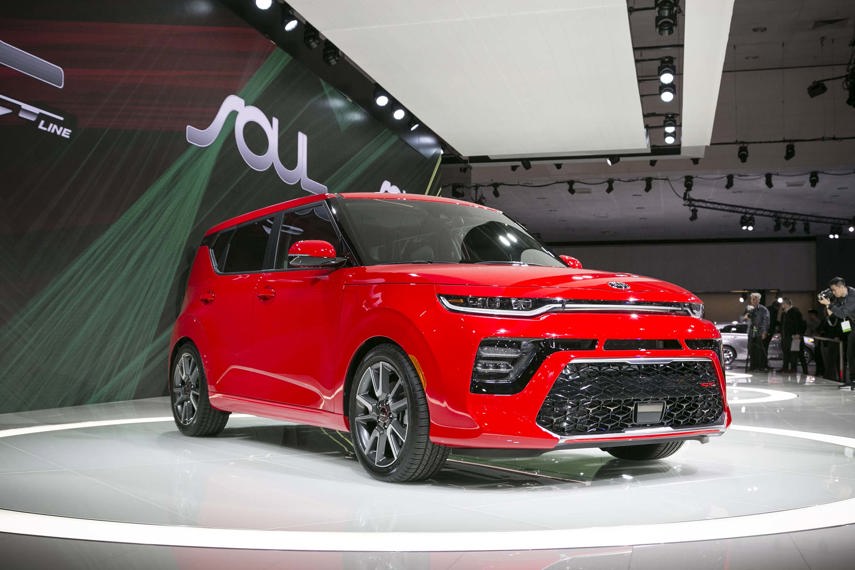
We don’t envy car designers tasked with updating unconventional-looking vehicles like the Soul; after all, there’s only so much you can do with a car shaped like a toaster. Therefore, Kia’s changes to the 2020 Soul – its third generation – are mostly in the details, like the squinty headlights and boomerang-shaped taillights.
There’s some new hardware behind the Soul’s updated front end. A redesigned 2.0L engine makes 147 hp and 132 lb-ft of torque, roughly splitting the difference between last year’s 1.6L and 2.0L engines. Last year’s turbo 1.6L engine (201 hp/195 lb-ft) isn’t on the spec sheet yet, but it looks set to join the lineup later in the 2020 model year, along with a seven-speed dual-clutch transmission.
Kia claims the third-generation Soul boasts a 142 L increase in cargo space. Notable options include a 10.25-inch infotainment touchscreen and a 10-speaker sound system powered by a 640-watt amplifier. You can also kit out your Soul with an ambient lighting system that includes settings called Party Time, Romance, and Hey! Yo!
The 2020 Kia Soul is available in LX, EX, EX+, EX Premium, and EX Limited trims. Kia hadn’t announced pricing at the time of this writing. Kia Canada’s website already lists the battery-powered 2020 Soul EV, whose starting MSRP is $42,595.
2020 Land Rover Range Rover Evoque

When we first saw the second generation of Land Rover’s entry-level model, we admit we had to look up the original to spot the changes. Little about the Evoque’s basic shape has changed, though the styling is smoother and new LED exterior lighting lends it a more high-tech look.
Indeed, the updated body is a wrapper for a more technology-intensive vehicle than the original Evoque. Key among the changes is the addition of a mild-hybrid drivetrain based on a 48-volt electrical system. It builds on a 2.0L turbocharged four-cylinder engine similar to the one that powered last year’s Evoque. However, it adds an electric motor to boost output to 296 hp, besting last year’s most potent model by 10 hp.
Entry-level models get the 2.0L turbo on its own, which promises 246 hp, up from last year’s 237 hp. Gas-only versions are labelled P250, and hybrid Evoque models are called P300.
All-wheel drive and a nine-speed automatic transmission are standard with both powertrains.
Other new optional technology tidbits include a camera-based rear-view mirror that eliminates blind spots, and the 360-degree parking camera system, which includes a lens that looks under the front bumper to help drivers navigate rough terrain more confidently.
Inside, Land Rover says the new Evoque boasts better rear-seat and cargo space, and more spots to stash odds and ends.
2020 Land Rover Range Rover Evoque pricing starts at $47,000 in P250 form, and $52,500 for the P300.
2019 Volkswagen Arteon

Volkswagen’s latest appeal to upscale audiences is the Arteon, a sleek mid-size sedan positioned above the Passat to replace the CC as the brand’s flagship model.
The Arteon rolls into VW’s Canadian showrooms in May on a longer wheelbase, which the company says allows for a roomier, more comfortable interior than its predecessor.
Like the CC, the Arteon is what the auto industry calls a four-door coupe, with a sloping rear roofline that prioritizes flashy styling over rear-seat space. To balance out that practical shortcoming, VW gave the Arteon a large hatchback tailgate housing a vast cargo area. It promises an SUV-like 770L of volume with the rear seats in place, or 1,557L with the rear bench folded away.
The Arteon’s motivation comes courtesy of a 2.0L turbocharged four-cylinder engine that makes 268 hp and 258 lb-ft of torque. All-wheel drive is standard, along with an eight-speed automatic transmission.
For a starting price of $47,995, the Arteon comes in a single Execline trim. In the past, we’d have considered that a lot of money for a Volkswagen, but this time, it seems like a deal considering the car’s great looks and generous list of upscale niceties.
Standard kit includes passive keyless entry, three-zone automatic climate control, 18-inch wheels, an 8.0-inch infotainment touchscreen with navigation, a 700-watt stereo with 11 speakers, a digital gauge cluster, heated steering wheel, Nappa leather upholstery, heated and ventilated front seats, heated rear seats and a driver’s seat massage function. Volkswagen also includes forward-collision warning with pedestrian detection and automatic braking, blind-spot monitoring, cornering headlights with automatic high beams and adaptive cruise control. A $2,100 driver assistance package bundles a 360-degree exterior camera system, lane-keeping assist and park assist.


